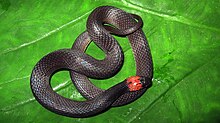
Tantilla melanocephala, commonly known as the black-headed snake or neotropical black-headed snake, is a species of small colubrid snake endemic to Central America and South America.

Spilotes pullatus, commonly known as the chicken snake, tropical chicken snake, or yellow rat snake, is a species of large nonvenomous colubrid snake endemic to the Neotropics.

Spilotes sulphureus, commonly known as the yellow-bellied hissing snake or Amazon puffing snake, is a species of venomous snake in the family Colubridae. It is widely distributed throughout South America, as well as the Caribbean island of Trinidad.

Phrynonax poecilonotus is a species of nonvenomous snake in the family Colubridae. The species is endemic to the New World.

Oxybelis aeneus, commonly known as the Mexican vine snake or brown vine snake, is a species of colubrid snake, which is endemic to the Americas.

Mastigodryas boddaerti, commonly known as Boddaert's tropical racer, is a species of snake in the family Colubridae. The species is native to tropical South America including Trinidad and Tobago.
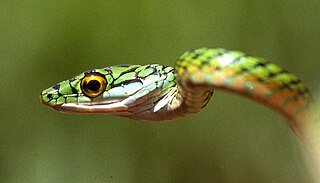
Leptophis ahaetulla, commonly known as the lora or parrot snake, is a species of medium-sized slender snake of the family Colubridae. The species is native to Central America and northern South America.
Atractus trilineatus, commonly known as the three-lined ground snake, is a species of small burrowing snake in the family Colubridae. The species is native to South America.

The banded cat-eyed snake is a species of mildly venomous, rear-fanged, colubrid snake, endemic to the New World.

Pseudoboa neuwiedii, commonly known as the dark-headed red false boa or Neuwied's false boa, is a species of snake in the family Colubridae. The species is endemic to northern South America.

The royal ground snake is a species of snake in the family Colubridae. The species is endemic to northern South America.

Erythrolamprus cobella, commonly known as the mangrove snake, is a species of small semi-aquatic snake, which is endemic to South America.
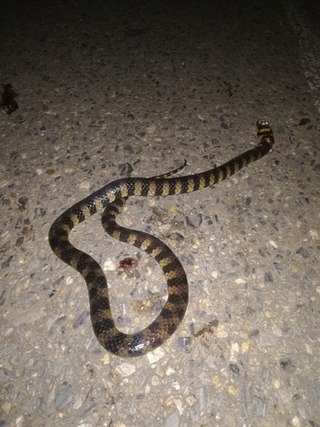
Hydrops triangularis, commonly known as the water false coral snake, triangle water snake, triangle watersnake, or water coral, is a species of snake endemic to northern South America and the Amazon Basin.
Erythrolamprus ocellatus, commonly known as the Tobago false coral snake, red snake, or doctor snake is a species of colubrid snake, which is endemic to the island of Tobago.
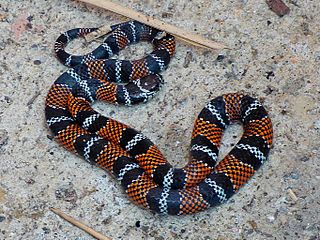
Erythrolamprus bizona, commonly known as the double-banded false coral snake, is a species of colubrid snake, which is found in northern South America and Central America.

Erythrolamprus aesculapii, also known commonly as the Aesculapian false coral snake, the South American false coral snake, and in Portuguese as bacorá, or falsa-coral, is a species of mildly venomous snake in the family Colubridae. The species is endemic to South America.

Amerotyphlops brongersmianus, known commonly as Brongersma's worm snake or the South American striped blindsnake, is a species of harmless blind snake in the family Typhlopidae. The species is native to South America and Trinidad and Tobago in the Caribbean. No subspecies are currently recognized.

Amerotyphlops trinitatus, known commonly as the Trinidad blindsnake, Trinidad worm snake, and Trinidad burrowing snake, is a harmless blind snake species in the family Typhlopidae. The species is endemic to Trinidad and Tobago. There are no subspecies that are recognized as being valid.

Ninia sebae, commonly known as the redback coffee snake or the red coffee snake, is a species of small terrestrial snake in the family Colubridae. The species is native to southeastern Mexico and Central America south to Costa Rica. Although it resembles some venomous coral snakes in color and size, it is not venomous and seldom bites humans.
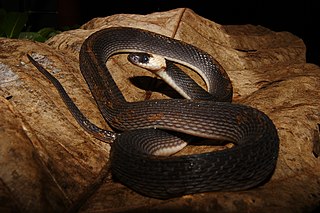
Ninia hudsoni, also known commonly as the Guyana coffee snake and Hudson's coffee snake, is a species of snake in the family Colubridae. The species is native to northwestern South America.
